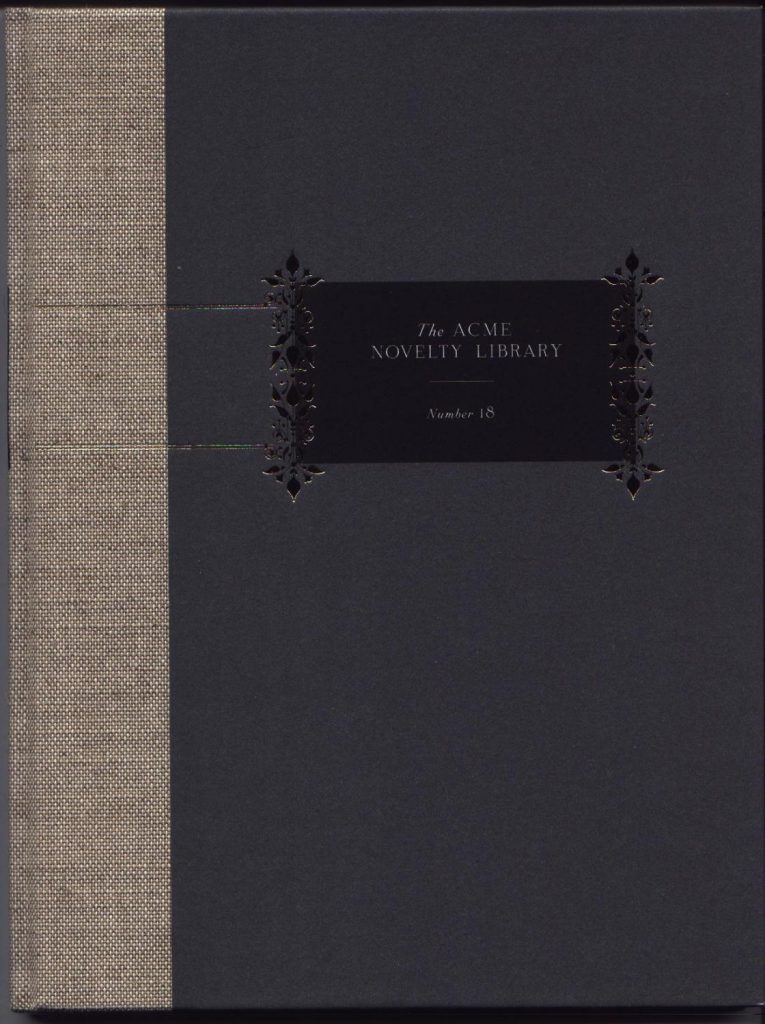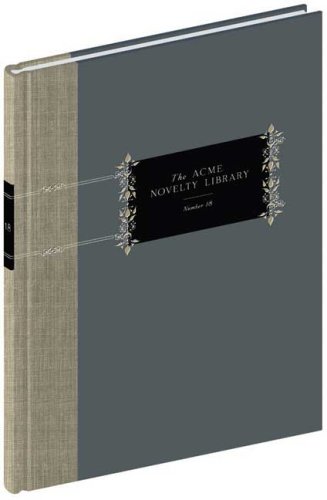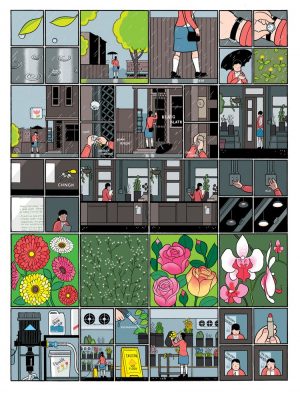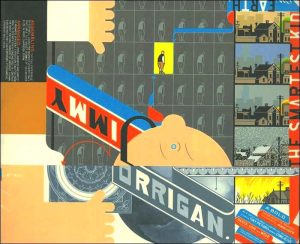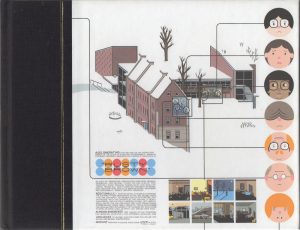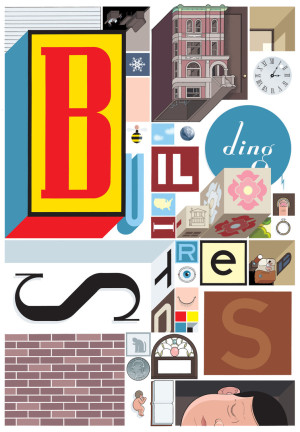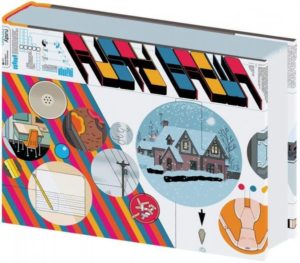Review by Graham Johnstone
Acme Novelty Library is Chris Ware’s personal periodical series, of which there were twenty issues in a variety of forms between 1993 and 2010.
Published amid the serialisation of his Rusty Brown graphic novel, (in issues 16, 17, 19 and 20), the front matter identifies this as one chapter from a longer work. That work would eventually be issued as a collection of books, pamphlets and broadsheets in a box as 2012’s Building Stories. Much of this slim hardback was previously serialised, and it works well as a sequence of shorts, while convincingly forming a novella. The different sizes and formats, of original publication, actually add variety, and offer some respite from Ware’s usual visual density.
The protagonist is an unnamed young woman who is missing part of one leg, and wears a prosthesis. Her day-to-day life is uneventful: she works as a florist, she buys groceries, she lies on her sofa, she shaves “her one and a half legs”. However, her inner life is active as she ruminates on her past: what to do after art school; falling into ‘work’ house-sitting for a family, and then as their nanny; before ending up a florist. She dwells on her one romantic relationship. She might still be in her twenties, but thinks as if she were in her epilogue.
It’s less a story about coping with physical disability, (her prosthetic leg restores most functionality), as about her coping with her resulting feelings of unattractiveness, and consequent struggles to find love. The subtle effects of her disability are revealed through poignant moments. She realises her apparently loving partner hides her leg stump during sex, and invasive gynaecology has a further indignity because the stirrups won’t work with “one and a half legs”.
Her disability even plays into her role as a nanny in an unexpected, but similarly distressing, way. While the downbeat mood is by now typical Ware, the emotion is underplayed compared to the much noted bleakness of his debut Jimmy Corrigan, rendering the story more affecting for her relative lack of self pity. The Rusty issues were heavily narrated, but here there’s more variety, with a number of silent pages, and pages narrated by the building. Even some over-narration, has a further level to it: the protagonist is studying creative writing, and self-consciously finessing the narration off her own story.
Ware was by this point a consummate artist. However the start of Rusty Brown, perhaps because the single setting restricted palettes and imagery, became visually fatiguing. Here, though, Ware brings to even the most everyday scenes – prepping, wrapping and selling flowers – a hypnotic fascination. Ware’s visual style of schematic interiors, inexpressive rendering, and islands of micro-panels is by now familiar. However, there’s always some new visual innovation. A disrobed couple, illuminated by the blue glow of the TV is striking, as are the cut-aways of the building, which will be given pride of place in the Building Stories box. Perhaps the most impressive visual device though, is the replication of an anatomical entry in an encyclopaedia that fascinated her as a child. Ware replicates over a series of spreads the multi-layered images that progressively remove clothes, skin, and muscle down to the bone, all made more striking by her incomplete leg. Many of Ware’s visual devices have a distancing effect, further reinforced by the lack of close-ups, and that’s all helpful here, in a story that might otherwise be too emotionally pleading.
Ware continues to deepen his writing, and extend and finesse his visual repertoire, though occasionally the density of text and panels can make it a daunting read.
